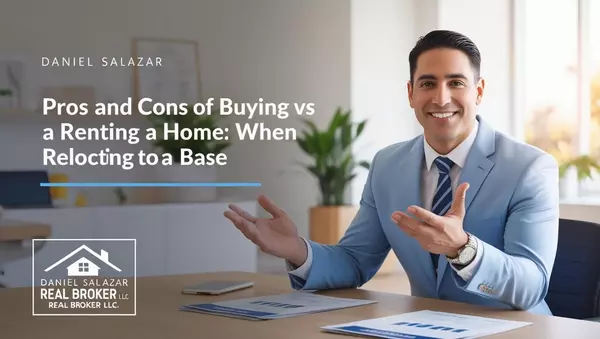Refinancing Your VA Loan: When and How to Do It

Refinancing Your VA Loan: When and How to Do It

Refinancing a VA loan can be an excellent option for military families who want to take advantage of lower interest rates, shorten their loan term, or access home equity. If you’re looking to lower your monthly payments, eliminate private mortgage insurance (PMI), or even pay off other debts, refinancing might be the right choice.
In this blog, we’ll walk you through when and how to refinance your VA loan, including the key steps, benefits, and refinancing options available.
1. Why Should You Consider Refinancing Your VA Loan?
There are a variety of reasons why refinancing your VA loan might be a smart move:
-
Lower interest rates: If interest rates have dropped since you took out your VA loan, refinancing could help you secure a lower rate, which could reduce your monthly payments and save you money over time.
-
Shorten your loan term: Refinancing to a shorter term (such as 15 years) can help you pay off your loan faster and save on interest, although your monthly payment may increase.
-
Access home equity: If you’ve built equity in your home, refinancing could allow you to tap into that equity with a cash-out refinance. This can be useful for home improvements, debt consolidation, or other financial needs.
-
Eliminate PMI: If your home’s value has increased, refinancing could help you eliminate PMI, which could result in additional savings each month.
-
Consolidate debt: Refinancing to a higher loan amount with a lower interest rate can allow you to pay off high-interest debt like credit cards or personal loans.
2. When Should You Refinance Your VA Loan?
While refinancing can offer several advantages, it’s important to evaluate your situation before making a decision. Here are a few things to consider:
-
Interest rate comparison: If current interest rates are significantly lower than your existing VA loan rate, refinancing can help you save money. Experts generally recommend refinancing if the new rate is at least 0.5% to 1% lower than your current rate.
-
Loan balance: If you have a small remaining loan balance, refinancing might not be worth the upfront costs. Refinancing typically works best when you still have a considerable balance left.
-
Credit score: If your credit score has improved since you initially secured your VA loan, refinancing may help you get a better interest rate.
-
Plans for staying in your home: If you’re planning to stay in your home long-term, refinancing can be a good strategy. However, if you're planning to move soon, the upfront costs of refinancing may not provide enough benefit to justify the effort.
-
Your financial goals: Refinancing can help you achieve a variety of financial goals, such as lowering your monthly payment, paying off your mortgage sooner, or consolidating debt. Consider how refinancing aligns with your personal financial objectives.
3. Types of VA Loan Refinancing Options
When it comes to refinancing your VA loan, there are two primary options:
VA Interest Rate Reduction Refinance Loan (IRRRL)
The IRRRL, also known as the VA Streamline Refinance, is designed to help you lower your interest rate and monthly payments with minimal documentation. It’s a fast and simple process that doesn’t require an appraisal or income verification in most cases.
Benefits of the IRRRL include:
- No need for an appraisal
- No income verification required
- Lower closing costs
- Simplified and faster process
This option is ideal if you want to lower your interest rate and monthly payments without cashing out home equity or changing the length of your loan term.
VA Cash-Out Refinance
If you need access to the equity in your home, the VA Cash-Out Refinance allows you to borrow more than what you owe on the home and take the difference in cash. This can be a great option if you want to pay off high-interest debt, fund home renovations, or cover other large expenses.
Benefits of the Cash-Out Refinance include:
- Access to cash for home improvements, debt consolidation, or emergencies
- Potentially better interest rates compared to conventional loans
- No private mortgage insurance (PMI) requirement
Unlike the IRRRL, this option requires a full appraisal and more paperwork, but it provides flexibility for those looking to access their home equity.
4. How to Refinance Your VA Loan
The refinancing process for a VA loan is relatively straightforward, but it does require some important steps:
-
Evaluate your financial situation: Before refinancing, assess your goals and financial situation. Consider factors such as current interest rates, your remaining loan balance, and your long-term plans.
-
Choose the right refinance option: Based on your goals, determine whether an IRRRL or a Cash-Out Refinance is the best option for you.
-
Get pre-approved with a VA-approved lender: Work with a lender that specializes in VA loans and refinancing. They will evaluate your financial situation, check your credit score, and determine your eligibility for refinancing.
-
Submit required documents: Depending on the type of refinance, you may need to submit documents such as proof of income, recent tax returns, and your home’s current market value.
-
Close on your new loan: Once your refinance is approved, you’ll sign the paperwork and complete the closing process. If you’re doing a Cash-Out Refinance, you’ll also receive the funds you’ve requested.
5. Things to Consider Before Refinancing
Before deciding to refinance your VA loan, keep the following considerations in mind:
-
Closing costs: Refinancing comes with closing costs, which can range from 2% to 5% of the loan amount. Make sure the savings from refinancing outweigh the cost of the process.
-
Length of time in your home: If you’re planning to move within a few years, refinancing may not be the best option due to the upfront costs. However, if you plan to stay in your home for the long haul, the savings can be significant.
-
Impact on entitlement: Refinancing can affect your VA loan entitlement, particularly if you’re doing a Cash-Out Refinance. Make sure to understand how this could impact your ability to use your VA loan benefit in the future.
In Summary
Refinancing your VA loan can be a great way to take advantage of lower interest rates, reduce your monthly payments, or access your home equity. Whether you choose an IRRRL for a streamlined refinance or a Cash-Out Refinance to access cash, the process can help you meet your financial goals.
If you’re considering refinancing your VA loan, it’s important to work with a VA-approved lender and a knowledgeable real estate agent to guide you through the process. The right refinance strategy can help you save money, reduce debt, and achieve your homeownership objectives.
Contact Realtor Daniel Salazar
Looking to refinance your VA loan or purchase a new home? I’m here to help! As a real estate agent who specializes in working with military families, I can guide you through the process and help you make the most of your VA loan benefits.
Realtor: Daniel Salazar
Company: REAL Broker LLC
Phone: 210-701-3880
Email: dansalre11@gmail.com
Contact me today to get started on your VA loan journey!
Categories
Recent Posts











